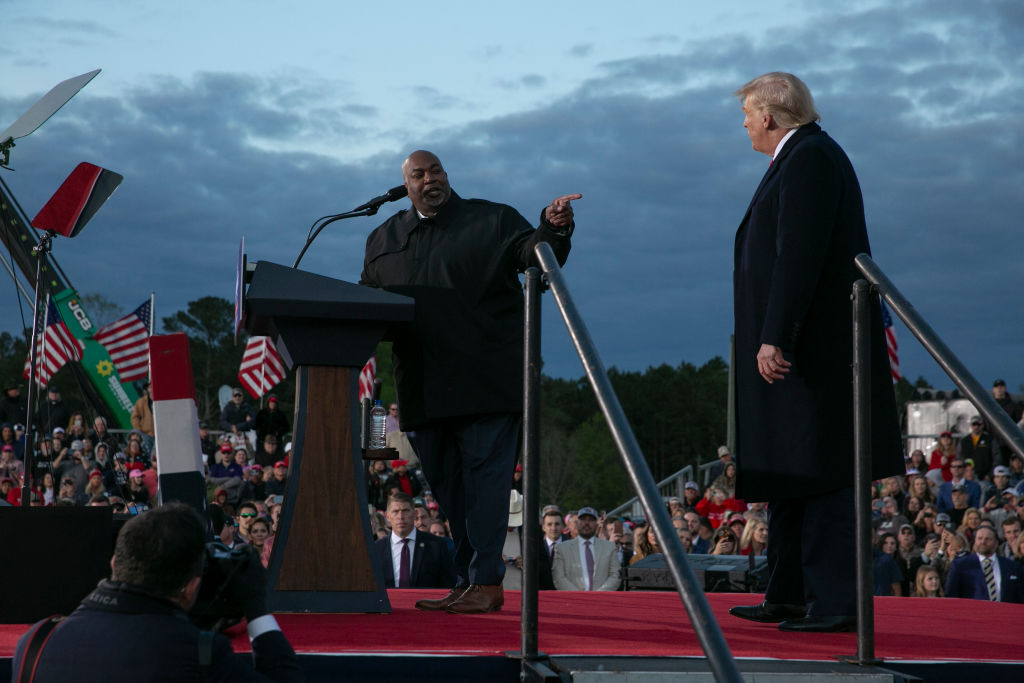
It’s a swingin’ time in the swing states these days.
Down in North Carolina, with 16 electoral votes and an absolute must-win for former President Donald Trump, it’s getting positively freaky as the Republican gubernatorial nominee there says that he is ABSOLUTELY not the same Mark Robinson who used his email address to create an account on a website for those seeking extramarital affairs, and DEFINITELY not the person who used his same user name to frequently comment on, um, niche pornography at the web site Nude Africa, and MOST CERTAINLY not the man whom the employees of a dirty book store say was a habitué of their private viewing booths.
Now, it’s unlikely that any voter who was determined to vote for Trump in North Carolina will choose to vote for Vice President Kamala Harris because of Robinsion’s alleged enthusiasms or even his penchant for political radicalism. But it won’t be without ill effect for Republicans.
There are some voters who might have gone out to vote for a different Republican gubernatorial nominee and defaulted to Trump on the presidential level but will instead stay home. It’s not a big number, but what if it was just 2,000 people? And there will unquestionably be those actually persuadable voters who decide that the Republicans are just too weird to support this year. That’s probably a good bit more than 2,000 folks.
In a state that was decided by fewer than 75,000 votes four years ago, you just wouldn’t want to be having a conversation about porno penchants 45 days before an election and in the week that the absentee ballots started going in the mail.
How close is the presidential race in North Carolina right now? In the absence of abundant high-quality polls, how about we just lean on the polling average from 538, which has at Harris 47.4 percent and Trump at 47.5 percent. A tenth of a point. Zoinks.
But maybe, maybe that’s just a mirage created by a persistent lean in the polls against Trump. Maybe it’s, ahem, skewed.
How did the polls look at this point in 2020? Biden was getting 47.3 percent to Trump’s 46.1 percent. But in the final result, it was Trump 49.9 percent to Biden 48.6 percent. Trump grew by 3.8 points, Biden by 1.3.
Or look at 2016 in North Carolina. At this point that year, it was Hillary Clinton 45.7 percent, Trump 47.1 percent. But when the votes were counted, she grew by just a half point to finish with 46.2 percent, while Trump jumped up to 49.8 percent, a rise of 2.7 points.
Were these the much-mythologized “shy Trump voters” who were lying to pollsters? Probably not many. Were these differences the result of rock-bottom response rates among Republican-leaning voters? Most assuredly a lot of it could be that. If working class white voters are unlikely to participate in polls, you will get unlikely working class white voters in your sample. The harder a demographic group is to get on the phone for a poll, the greater the risk of finding unrepresentative voters. If the typical bass won’t bite on spinner lures, you’ll only catch unusual bass when you’re fishing with spinners.
But the underappreciated part of the difference in polls and performance is this: late deciding and persuadable voters. We spend a lot of time talking about what’s wrong with polls, but not nearly enough considering the fact that voters actually still do decide and that races—and voters—actually do change quite a lot in the closing weeks.
If we look at the averages from 538 in 2016 and 2020 with the current election in three big swing states, we see a similar pattern play out with Trump and his Democratic rivals over and over. Check it out:
Pennsylvania
September 20, 2024, Polling Average
Harris: 48.3%
Trump: 46.4%
September 19, 2020, Polling Average (actual result)
Biden: 49.8% (50%) ↑ .2 points
Trump: 45.0% (48.8%) ↑ 3.8 points
September 24, 2016, Polling (actual result)
Clinton: 47.5% (47.5%) No change
Trump: 44.4% (48.2%) ↑ 3.8 points
Michigan
September 20, 2024 Polling Average
Harris: 48.5%
Trump: 45.9%
September 19, 2020 Polling Average (actual result)
Biden: 49.8% (50.6%) ↑ .8 points
Trump: 42.1% (47.8%) ↑ 5.7 points
September 24, 2016 Polling Average (actual result)
Clinton: 47.5% (47.3%) ↓ .2 points
Trump: 44.1% (47.5%) ↑ 3.4 points
North Carolina
September 20, 2024 Polling Average
Harris: 47.4%
Trump: 47.5%
September 19, 2020 Polling Average (actual result)
Biden: 47.3% (48.6%) ↑ 1.3 points
Trump: 46.1% (49.9%) ↑ 3.7 points
September 24, 2016 Polling Average (actual result)
Clinton: 45.7% (46.2%) ↑ .5 points
Trump: 47.1% (49.8%) ↑ 2.7 points
Did you notice how in every state Trump ended up with about the same vote share in 2020 as he did in 2016 while Democrats Clinton and now-President Joe Biden had very different outcomes from each other? Trump did about as well in 2020 as he did in 2016, while Biden out performed Clinton substantially.
Now look at Trump’s share of the vote in the polling average for this year. In every case, he’s a lot closer to where he ended up in the prior elections. In every case, he’s polling better than he did in the two previous cycles.
It is possible that Trump will again outperform the late September polls by 4 points. But it seems improbable. Trump, as we have all heard, has a high floor and a low ceiling. And now, in his third turn as the Republican nominee, it seems extraordinarily unlikely that there are a bunch of voters out there who just haven’t quite been able to make up their minds about the former president. He hasn’t changed, and if anything, has made himself a more undesirable candidate.
Trump will surely outperform his showing in the polls of today, but probably so will Harris. She could have a late-campaign collapse and bleed support for the next month, but it seems more likely that she will get at least some of the late deciders and keep most of the voters she’s already got.
My thought is that while the polling problems about Trump are real, we also should remember that it would be reasonable for voters to now know where they are on the man in a way they didn’t in 2020 and certainly 2016.
You might say that Trump isn’t doing better this time, but he is polling better. Now we get to see how Harris, the more unknown quantity, bounces.
Holy croakano! We welcome your feedback, so please email us with your tips, corrections, reactions, amplifications, etc. at STIREWALTISMS@THEDISPATCH.COM. If you’d like to be considered for publication, please include your real name and hometown. If you don’t want your comments to be made public, please specify.
STATSHOT
General Election
Kamala Harris: 48.2% (↓ 0.2 points from last week)
Donald Trump: 45.6% (↓ 0.6)
[Average includes: Fox News: Trump 48% – Harris 50%; NYT/Siena: Trump 46% – Harris 46%; Monmouth: Trump 44% – Harris 49%; Ipsos/Reuters: Trump 42% – Harris 47%; Maris/NPR/PBS: Trump 48% – Harris 49%]
Generic Ballot
Democrats: 47.4% (↑ 1.2 points from last week)
Republicans: 45.0% (↑ 1.2)
[Average includes: Monmouth: 48% Democrats – 47% Republicans; Marist/NPR/PBS: 46% Democrats – 45% Republicans; Emerson College: 48% Democrats – 44% Republicans; Suffolk/USA Today: 48% Democrats – 43% Republicans; Wall Street Journal: 47% Democrats – 46% Republicans]
TIME OUT: GIG WORKER
The Atlantic: “James Earl Jones would say, across the many years that he was asked about his role in Star Wars, that he recorded his original performance as Darth Vader in only a couple of hours. The voice is so ingrained in our culture that imagining how little time the actual work took is almost comical. But a couple of hours was all that was needed. The point, Jones would say, was to limit himself to a specific margin of expression. Too much, and Darth Vader would be overly humanized. Too little, and audiences would forget that the man really was human, once—and miss the tragedy of the arc George Lucas would take decades to flesh out. … Because of Jones, everything was there from the start. … Jones’s death [this month], at the age of 93, caps a career that seemingly knew no bounds—more than 100 screen credits alone. … He was a titan given the career that he deserved—a career bigger and broader than most actors’. And it is to his credit that even this was not big enough.”
TRUMP ZEROES IN ON EAST COAST STRATEGY
Politico: “None of those other four battlegrounds are relevant if Trump first blocks her in Pennsylvania, Georgia and North Carolina. It’s the most obvious route for the former president. … Trump’s television advertising reflects his focus on the trio. He’s spent the most in Pennsylvania, not surprising given its pivotal nature and six media markets, and the second most in Georgia. Last week, he dumped $17 million in North Carolina, a state where he had not made extensive advertising buys for the rest of the campaign. … If Trump’s best chance to wall off Harris from 270 electoral votes is clear enough to both campaigns, it’s also not lost on them that the vice president at least has more options than Biden. … A narrow Pennsylvania loss could prove moot, though, if Harris is able to make inroads with perhaps the two most pivotal constituencies in the Southern states: Black men and moderate Republicans.”
Ad buys surpass $500 million for last weeks of campaign: New York Times: “The presidential candidates and their allies plan to spend more than half a billion dollars on television and radio advertising over the final seven weeks of the campaign. Groups backing Vice President Kamala Harris have reserved $332 million worth of airtime for television and radio ads — 63 percent of the total — while just about $194 million will come from groups backing former President Donald J. Trump. … The state where the candidates and their allies plan to spend the most money on advertising is Pennsylvania: $133 million in all. Democrats have about a $21 million advantage in the state. … The next noisiest state will be Michigan, where about $95 million will be spent on television and Democrats have a $23 million advantage. Democrats have $6 million to $15 million advantages in four big battleground states — Arizona, Nevada, North Carolina and Wisconsin — as well as Nebraska.”
Teamsters won’t endorse Democrat for first time since ’96: Washington Post: “For the first time in nearly three decades, the International Brotherhood of Teamsters won’t endorse a candidate in the presidential race — a blow to the Democratic Party, which has reliably received the union’s approval for years. … The non-endorsement comes two days after union leaders and members met privately with Vice President Kamala Harris as she laid out her case for an endorsement. … The non-endorsement underscores a major division within the Teamsters, as well as other American unions with diverse membership. … No endorsement ‘likely means the difference between their members voting 50 percent for Harris vs. close to 60 percent,’ [strategist Steve Rosenthal] said, adding that ‘in a close race, that could be significant.’”
‘Uncommitted’ movement doesn’t back Harris—but urges vote against Trump: NBC News: “The Uncommitted Movement of pro-Palestinian Democrats is withholding its endorsement from Vice President Kamala Harris after she rebuffed its latest request. … The group said Harris had given it the cold shoulder and ‘fumbled’ by refusing even the ‘small gesture’ of allowing a Palestinian American speaker at last month’s Democratic National Convention. … The group said the matter of utmost importance to pro-Palestinian voters is stopping Trump. … ‘We must block Donald Trump, which is why we urge Uncommitted voters to vote against him and avoid third-party candidates that could inadvertently boost his chances,’ the group said.”
DEMS DESPAIR AS MONTANA RACE SLIPS AWAY
Politico: “Control of the Senate increasingly appears to hinge on a single race, and it’s quickly moved in the wrong direction for Democrats: Sen. Jon Tester of Montana has fallen behind his opponent in poll after poll. Democrats have been desperately pouring resources into helping Tester try to defy political gravity once again, with $45 million more slated for the final weeks of his battle with Republican Tim Sheehy. … Should they mount a long-shot offense somewhere they haven’t been playing as much, like against Sens. Ted Cruz (R-Texas) or Rick Scott (R-Fla.)? Would some of that money be better spent shoring up the many other battleground seats they’re defending? The answer, for now, is to stay the course. … National Republicans wanted this race. They labored to secure the nomination for Sheehy. … Both sides are expecting a grueling fight to the end.”
Sherrod Brown tries to turn back time in a reddening Ohio: Wall Street Journal: “Sen. Sherrod Brown, 71 years old, is counting on his distinctive populist brand to save him as he stares down the fight of his political life. … In his speeches, Brown points to his long career fighting about trade policy with presidents of both parties, starting with one of the first important votes of his congressional career, against the North American Free Trade Agreement in 1993. … Brown, Kyle Kondik said, has managed to survive politically as Ohio has turned away from his party by foregrounding an unapologetically pro-worker economic vision while still embracing liberal stances on social issues. … A recent Morning Consult poll of Ohio found Brown leading [Bernie] Moreno by 3 points, even as Trump held an 8-point lead over Vice President Kamala Harris. But Republicans are optimistic that gap will close as Moreno positions himself as a loyal Trump ally.”
BRIEFLY
Poll: Ayotte narrowly leads Craig in New Hampshire gubernatorial race—Boston Globe
Blue-dog Jared Golden neck-and-neck with GOP challenger—Bangor Daily News
Maryland’s Andy Harris tapped as next House Freedom Caucus leader—Politico
WITHIN EARSHOT: TIME TO BUY A HELMET
“There’s an old saying in Arkansas that you don’t learn nothing the second time you get kicked in the head by a mule.”—Arkansas GOP Rep. Steve Womack bemoans the House GOP’s inability to pass a funding bill as the federal government approaches a partial shutdown.
MAILBAG
“Reading your column about being Beto-ed, it made me wonder a bit about how donors react to a loss. Is there any evidence that someone who donates once tends to donate again, or do they tend to think they just threw their money down the drain so they’ll spend their discretionary finances on something more productive (a lifetime membership to The Dispatch comes to mind!)? And is there any difference between the big spenders and the small fries?” —Craig Berry, Frankfort, Illinois
Mr. Berry,
A great question! There is some good social-psychological research on the question of how donors decide, and a good place to start is on the differences between large-dollar donors and small-dollar donors.
Folks who give large sums to campaigns or PACs have complicated sets of motivations. Some are doing so because of professional or business obligations, others are disbursing sums across a number of races in service of a general objective—holding or winning the House or Senate, etc.—while others still are acting on emotion and vibes. They really like a candidate or hate her or his opponent and stroke a check for $20,000.
But that kind of impulsive behavior is how most small-dollar contributors act. If you think about the way digital fundraising works, campaigns, parties, and PACs are pushing on the pleasure and pain centers of recipients’ brains, trying to stoke fear, anger, or prospective schadenfreude at the suffering of one’s enemies. The ask is small: $5 with just the click of a button.
I would liken it more to online sports gambling than the kind of strategic investment that many large-dollar donors employ.
All best,
c
“I typically enjoy and agree with your distrust of primary elections and the criticism that they have contributed to polarization and poor candidates, but I’m curious what you make of a primary system like the one in Utah. There, the Republican state convention selects a preferred candidate for the primary election, revealing who would get chosen by state party insiders if the primary system didn’t exist. At the same time, other candidates are still able to get on the primary ballot by collecting signatures. In recent years, the state convention has selected more extreme candidates while more moderate candidates, such as Mitt Romney, Spencer Cox, and, this year, Senate candidate John Curtis, have gotten the nomination by garnering signatures, qualifying for the primary, and then getting more votes, much to the chagrin of those who are further to the right. In these cases, the primary system produced a more moderate and electable candidate. Do you take these examples to be a reflection of an oddness in Utah’s electorate, a result of Utah’s two-pathway primary system, or a signal that perhaps primaries are more representative than some other approaches to choosing candidates?”—Taylor Topham, North Chicago, Illinois
Mr. Topham,
Why not both? It is possible that Utahns’ green Jell-o brand of niceness and civic virtue would produce nicer, more virtuous candidates than other states even if it had a typical primary system and that the two-track system employed by the state’s parties is a hedge against capture by intense kooks.
I applaud Utah for eschewing the direct democracy of most states’ primary systems, but what works in the Beehive State might not work in other states.
The point about reforming or replacing primaries is that every state—and each party in every state—should decide what works best for them and what they think will provide the most comparative advantage for their success in general elections.
And that depends on what voters in those states are willing to accept. Louisiana’s jungle primary system reigned for generations, but now the state is moving away from that system and toward a more typical partisan primary system. So even when you have an electorate that is familiar with alternate ways of holding elections, partisan activists may still push for and obtain the perceived advantages of primary elections.
Part of what’s hard about fixing the ways state parties choose their nominees is that reforms face the same problems that mainstream candidates encounter in primaries. Even if a reform would be broadly popular, most voters aren’t paying attention to the mechanics of candidate selection, but the interests most deeply invested in the status quo—the interests that use primary elections to take political hostages—are deeply invested and engaged.
All best,
c
You should email us! Write to STIREWALTISMS@THEDISPATCH.COM with your tips, kudos, criticisms, insights, rediscovered words, wonderful names, recipes, and, always, good jokes. Please include your real name—at least first and last—and hometown. Make sure to let us know in the email if you want to keep your submission private. My colleague, the data-driven Nate Moore, and I will look for your emails and then share the most interesting ones and my responses here. Clickety clack!
CUTLINE CONTEST: RIGHT BEHIND YOU
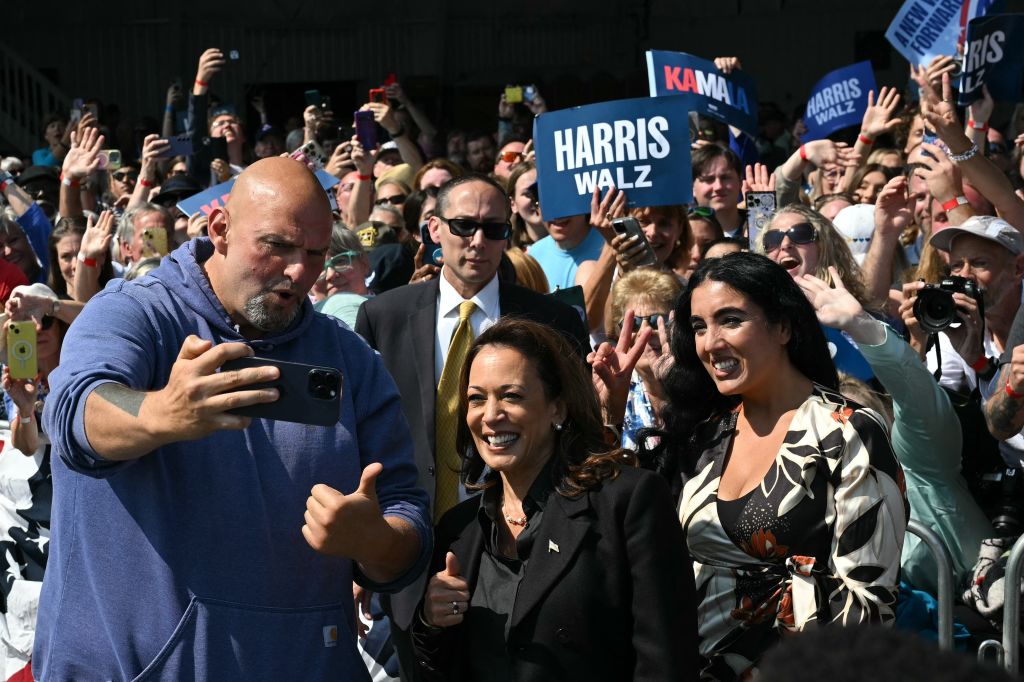
What a photo for a Cutline Contest!
This snap of Sen. John Fetterman posing for a selfie with Vice President Kamala Harris at a Pennsylvania rally had so much to offer, but my favorite gags were about the man—a Secret Service agent, I presume—sticking out in the crowd behind them. Our winner spoke to the specter that lurks in the memories of many Democrats:
“Despite the Democrats’ joy, the ghost of 2016 defeat lurks in the background.”—John Connelly, Salt Lake City, Utah
Winner, Looking Good Louis Division:
“… and the guy in the sunglasses is my tailor.”—Pat Brennan, Rolla, Missouri
Winner, There He Is Division:
“Waldo had always wanted to attend a political rally and, by donning a gold tie and sunglasses, was finally able to do so.”—Paul Williams, Shaker Heights, Ohio
Winner, Pennsylvania Polka Division:
“Let’s do this before Shapiro gets here.”—Linda McKee, DuBois, Pennsylvania
Winner, Drilling Down Division:
“Vice President Harris is delighted to discover that Senator Fetterman has pivoted the click on his camera to go ‘frack.’”—Bill Ward, St. Augustine Beach, Florida
Winner, You Rang Division:
“And here’s the audition video that nearly got me into that Addams Family movie.”—Michael Smith, Georgetown, Kentucky
Winner, #nofilter Division:
“There you go little lady … my app can make you look 6 feet tall!”—Mary Stine, Prairie Village, Kansas
Winner, Going My Way Division:
“No Kamala, THIS is how you hitchhike.”—Bob Bell, Roseville, California
Winner, Fleeced Division:
“‘Can I come out now?’ Tim Walz could be heard crying from underneath Fetterman’s sweatshirt.”—Tripp Whitbeck, Arlington, Virginia
FLAG ON THE PLAY
The [New Orleans] Times-Picayune: “The Federal Emergency Management Agency accidentally sent out a release declaring a ‘major disaster’ for the state of Texas following the New Orleans Saints’ victory over the Dallas Cowboys. On Thursday morning, an email was sent out by FEMA with the headline, ‘President Daniel Largues Declares Major Disaster After Saints Beat Cowboys in Dallas.’ Not long after the release hit media members’ email accounts, a second message was sent out asking that the prior release be disregarded. … FEMA confirmed to The Times-Picayune that the mistake was made while training new employees on how to use a program that sends out press releases. The Saints thumped the Cowboys 44-19 in stunning fashion on Sunday, but the only damage left behind by the team from New Orleans was likely the hurt feelings of football fans in Texas. … Residents of South Louisiana haven’t always had much confidence in FEMA, but at least they can get a laugh out of this mistake.”
Nate Moore contributed to this report.

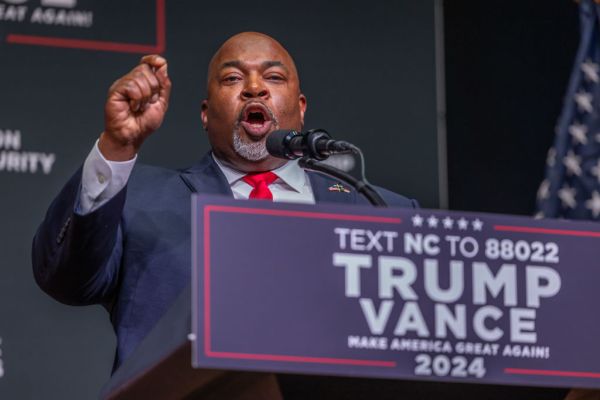
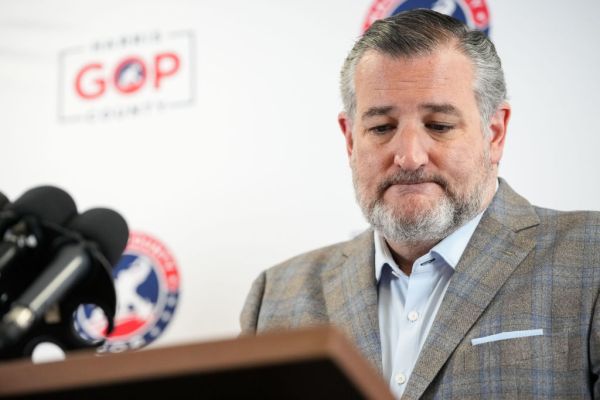
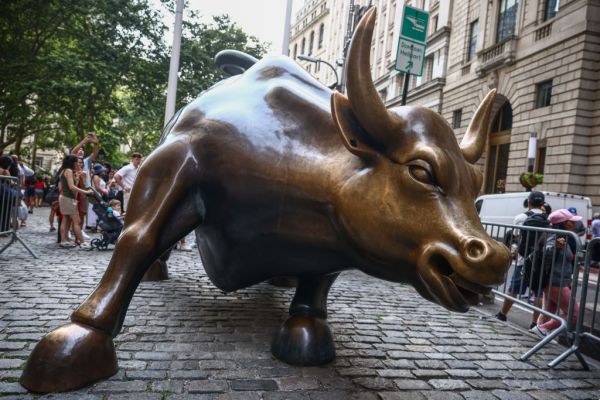
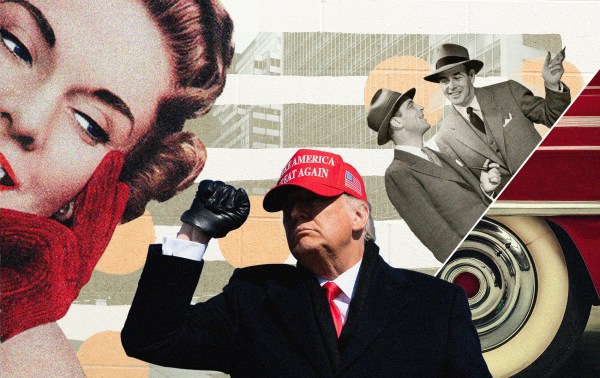
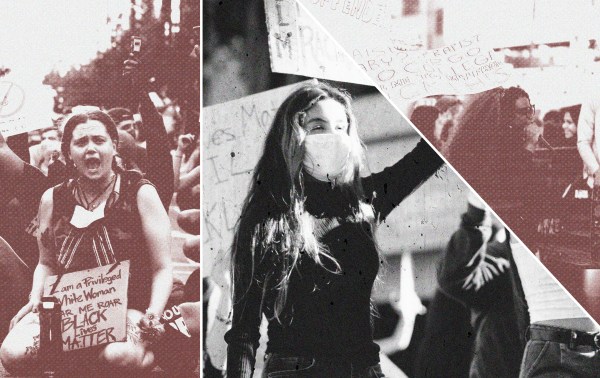

Please note that we at The Dispatch hold ourselves, our work, and our commenters to a higher standard than other places on the internet. We welcome comments that foster genuine debate or discussion—including comments critical of us or our work—but responses that include ad hominem attacks on fellow Dispatch members or are intended to stoke fear and anger may be moderated.
With your membership, you only have the ability to comment on The Morning Dispatch articles. Consider upgrading to join the conversation everywhere.